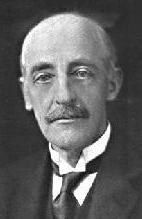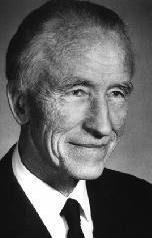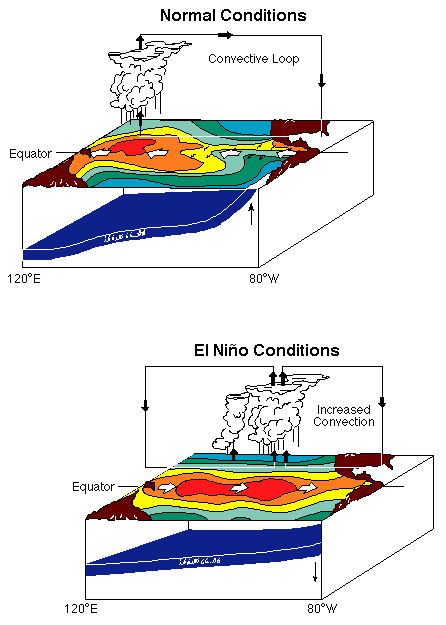| Home | Definition An El Niņo is a temporary change in the climate of the Pacific Ocean, in the region around the equator, involving the warming of tropical waters. It occurs every two to seven years, and peaks near December. Records show that El Niņo's occurrences can be traced back all the way to 1567. The early civilizations obviously did not understand what it is al all and believed that is was just another normal climatic factor that affected them. Peruvian sailors along the western shores of South America were the ones who gave the name to this phenomenon. Normally, the waters where they fished were cold and would flow from the South to the North. However, in certain years, the water would become warm, and reverse in its flow. This made fishing conditions unfavourable. It was also during the Christian era that this occurred, thus the name El Niņo - "The Christ Child". Even in this century, scientists believe that this special phenomenon is independent of other weather patterns, meaning that it is not brought along by any other weather elements. Sir Gilbert Walker, when researching on the topic, recognized some weather patterns in South America which he associated with weather temperatures. He noticed that when pressure rose in the east, it usually dipped in the west, and vice-versa. It was he that coined the term Southern Oscillation to dramatize the ups and downs in this east-west see-saw effect. He also realized that Asian monsoon seasons under certain barometric conditions were often linked to drought in Australia, Indonesia, India, parts of Africa and mild winters in western Canada.
He was the first person to claim that there was a connection between the monsoons in India and the unusually mild winters in Canada. A Norwegian meteorologist, Jacob Bjerknes, saw a connection between the unusually warm sea-surface temperatures and the weak easterlies and heavy rainfall that accompanied low-index conditions. Bjerknes' discovery led to the recognition that the warm waters of El Niņo and the pressure seesaw of Walker's Southern Oscillation are part and parcel of the same phenomenon -- sometimes referred to by the acronym ENSO (El Niņo Southern Oscillation). El Niņo is thought to occur due to changes in the normal patterns of trade wind circulation. Usually, the winds move westward, carrying warm surface water to Indonesia and Australia and allowing cooler water to upwell along the South American coast. For reasons yet to be fully understood, these trade winds can be reduced at times, or even reversed. This moves warmer waters toward the coast of South America, raising water temperatures
Warm waters cause heat and moisture to rise from the ocean off Ecuador and Peru, resulting in more frequent storms and torrential rainfall over these normally arid countries. Air circulation at 5 km high in the atmosphere is altered during El Niņo and La Niņa years. In El Niņo winters, the jet stream over the North Pacific would be split on its approach to North America. A weaker branch would be diverted northward into the Northwest Territories of Canada while the lower subtropical branch would be shifted several degrees of lattitude southward. |
| What is El Niņo? | |
| Measuring El Niņo | |
| Comparing El Niņos | |
| Global Effects | |
| El Niņo to La Niņa | |
| Further Reading | |
| The Team | |
 |
|
| This page
has been visited times since 25 June 1998 |
|
| Web space
kindly provided by |
|
| Best viewed
with at 800x600 High Colour (32-bit) |
|


